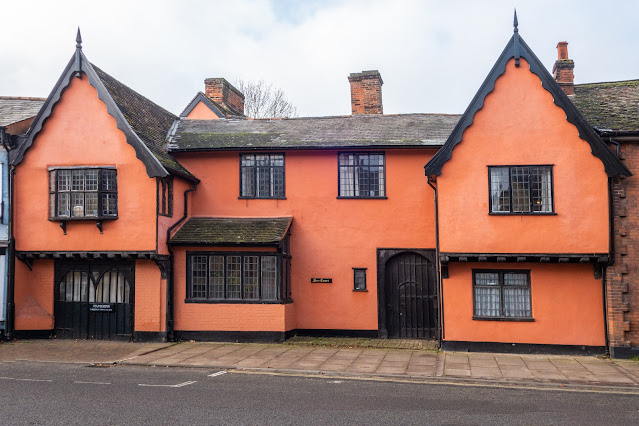Stowlangtoft Church
At the heart of the village of Stowlangtoft is St George's church, a magnificent Perpendicular building erected around 1370. It is thought to stand on the site of a former Roman camp. The church was built in one concerted effort, and as a result, is a beautiful example of early Perpendicular Gothic without later embellishments.
The major patron was the lord of the manor, Robert Dacy de Ashfield, who was buried in the chancel in 1401. Also buried in St George's is Peter Tillemans (d. 1734), one of the most influential painters of sporting scenes in English history.
The church was restored in 1855 by William White. It retains the base of a 15th century painted screen, and 15th-century benches in the nave with carved poppyhead ends. There are more 15th-century benches in the chancel, with several nicely carved misericords, brought to Stowlangtoft from either Thetford Priory or Bury St Edmunds Abbey at the Dissolution of the Monasteries.
The Marble `altar reredos` in the church has quite a story to it. Presumably once part of an altarpiece, it has nine groups of 15th century Flemish work representing scenes from the Last Days in Jerusalem, set on oak pedestals at the sides of the Victorian reredos. In high relief they are carved from solid oak about five inches thick. There are many figures in each group and the clear-cut finish of detail is astonishing. One rare scene is of Christ preaching to the Spirits in prison; in another the mouth of Hell is represented by the open jaws of a monster in the act of swallowing four unhappy victims. Other groups are the Agony of Gethsemane, the Road to Calvary, the Scourging, the Descent from the Cross, the Entombment, the Resurrection, and the Ascension.
They do have an interesting story as they were given to the church by Henry Wilson of Stowlangtoft Hall, who allegedly found them a few miles off in an Ixworth junk shop. They show images from the crucifixion story, but are not Stations of the Cross as some guides suggest. They date from the 1480s, and were almost certainly the altarpiece of a French or Flemish monastery that was sacked during the French Revolution. The carvings were once brightly painted, and piled up in a block rather than spread out in a line. The niches, and crowning arches above them, are 19th Century.
One cold winter's night in January 1977, a gang of thieves broke into this locked church and stole them. Nothing more was seen or heard of them until 1982, when they were discovered on display in an Amsterdam art gallery. Their journey had been a convoluted one. Taken to Holland, they were used as security for a loan which was defaulted upon. The new owner was then burgled, and the carvings were fenced to an Amsterdam junk dealer. They were bought from his shop, and taken to the museum, which immediately identified them as 15th Century carvings. They put them on display, and a Dutch woman who had read about the Stowlangtoft theft recognised them.
The parish instituted legal proceedings to get them back. An injunction was taken out to stop the new owner removing them from the museum. The parish lost the case, leaving them with a monstrous legal bill, but the story has a happy ending. A Dutch businessman negotiated their purchase from the owner, paid off the legal bills, and returned the carvings to Stowlangtoft. Apparently this was all at vast cost, but the businessman gave the gift in thanks for Britain's liberation of Holland from the Nazis. Today, the carvings are fixed firmly in place and alarmed, so they won't be going walkabout again.
Monument to Paul D'Ewes in the chancel, by John Johnson of London, 1624: It depicts him as a kneeling figure with two wives, son and seven daughters. Paul D'Ewes was one of the six Clerks in Chancery and in 1612 purchased from Sir Robert Ashfield the manor of "Stow-Langetot" (Stowlangtoft) in Suffolk. He married Cecilia Simonds, sole daughter and heiress of Richard Simonds of "Croxden, Dorset", by whom he had a son and heir Sir Simonds d'Ewes, 1st Baronet (1602–1650), as well as six daughters
In the churchyard is this memorial stone to Peter Fuller, art critic of The Daily Telegraph who died at age 42 in a single-vehicle car accident on the M4 motorway in Berkshire, on 28 April 1990. The accident also injured three others, including his wife and 3-year-old son. Their unborn son died as well.
Not knowing anything about him, I resorted to the internet for the following information:
In the early 1970s, Fuller wrote for the radical newspapers Black Dwarf and Seven Days, and was responsible for establishing the latter, "a short-lived Marxist glossy weekly". Fuller subsequently freelanced elsewhere.
Fuller was the founder and founding editor of the quarterly magazine Modern Painters, launched in 1987, a work "principally... bringing attention to British artists." reflecting his admiration for the aesthetic principles of John Ruskin. In the spring of 1989 he was appointed art critic of The Sunday Telegraph and The Daily Telegraph, the former of which carried his final review on Sunday, 29 April 1990.
Fuller wrote regularly for Art Monthly UK and New Society for nearly 20 years, alongside publishing such books as Art and Psychoanalysis. Originally a follower of the critic John Berger, Fuller moved to the political right in mid-life, coming into conflict with his former allies Art & Language. The archive of Fuller's letters, journals and writings is held at the Tate Gallery in London.
A couple of exterior images of the church including the beautiful entrance.









Comments